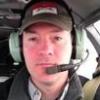Reduced fuel consumption by flying at the Carson #
-
Members Online
- MikeOH
- Denis Mexted
- Speed Merchant
- Meshach
- Utah20Gflyer
- Alan Maurer
- carusoam
- Peter T
- CaliDreaminMr
- Will.iam
- FlyLateNLife
- 00-Negative
- N305EP
- Max3293F
- rturbett
- PT20J
- MB65E
- hubcap
- FoxMike
- N201MKTurbo
- LANCECASPER
- Andy95W
- 231GKY
- theoriginalturk
- takair
- 201er
- marcusku
- carguy4471
- eman1200
- Hank
- IvanP
- 33UM20C
- ZuluZulu
- hammdo
- Ned Gravel
- theanswriz42
- kaba
- EKoS
- philiplane
- redbaron1982
- Joe Linnebur
- Matt_AZ


Recommended Posts
Join the conversation
You can post now and register later. If you have an account, sign in now to post with your account.